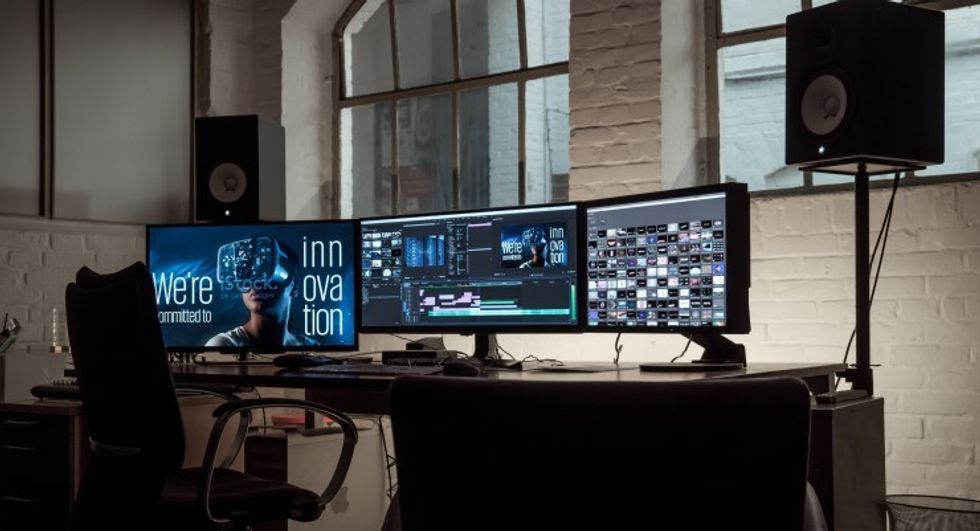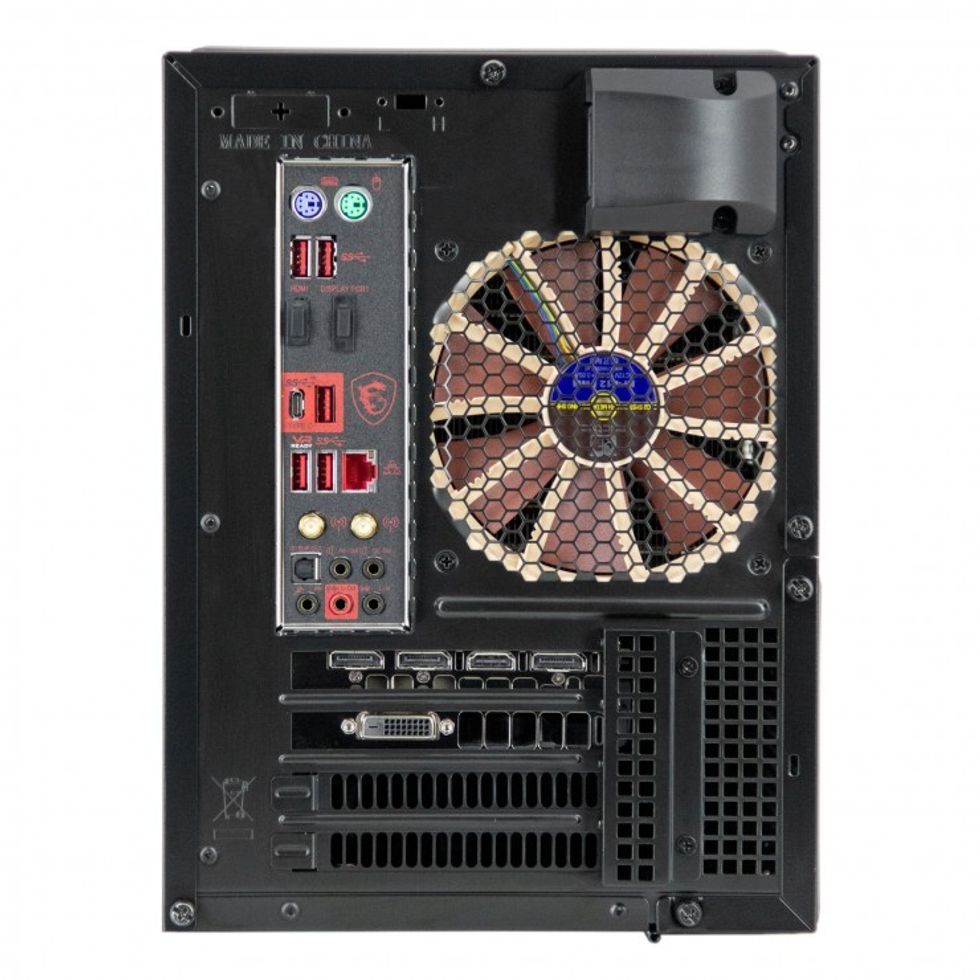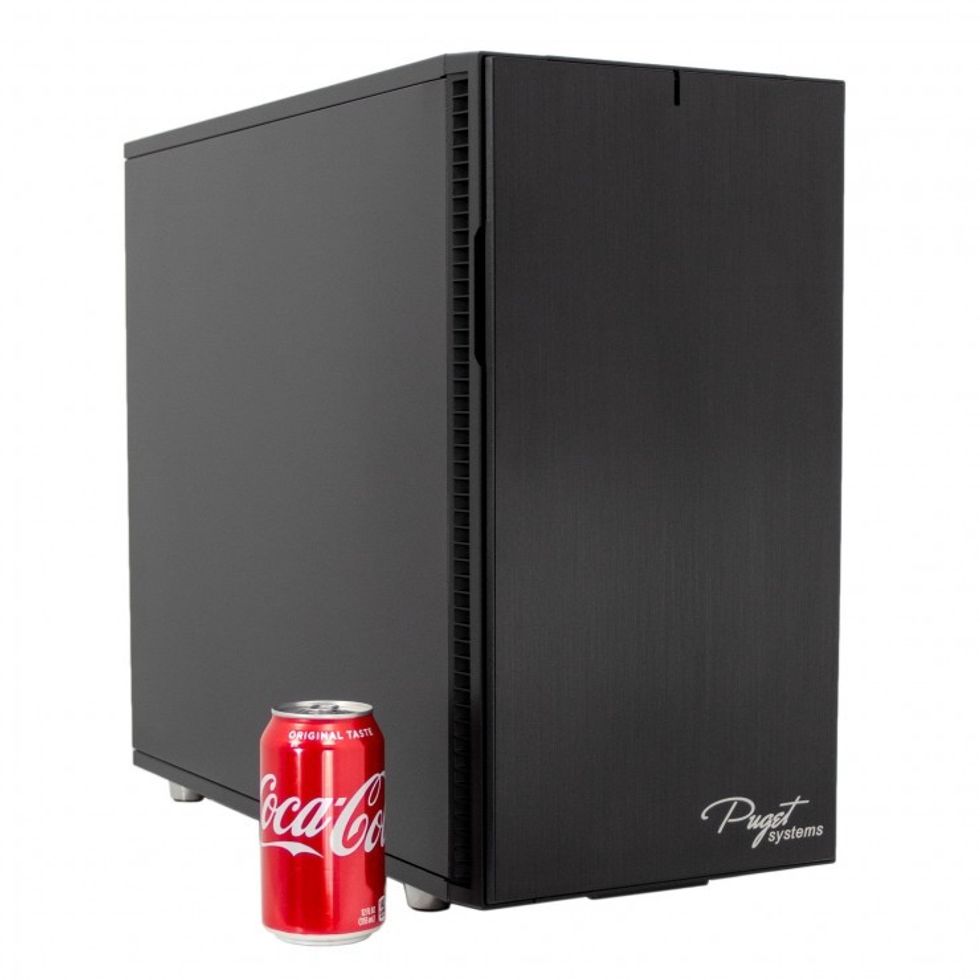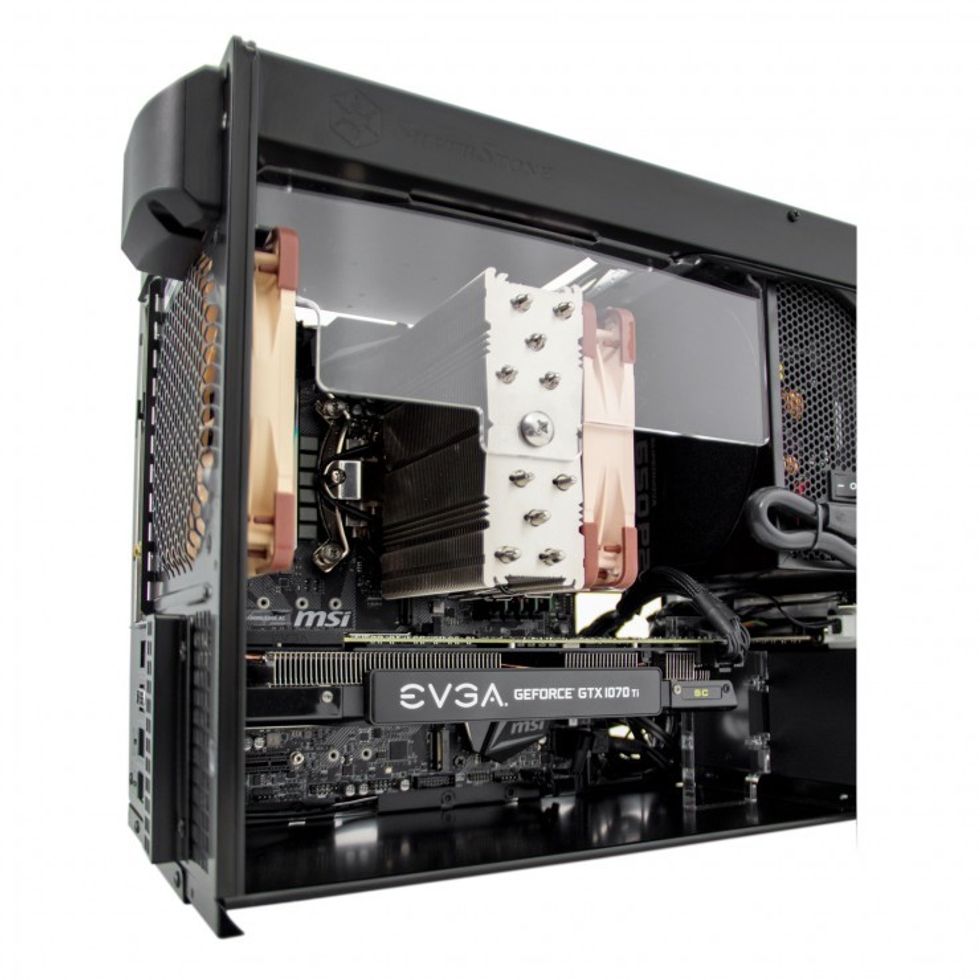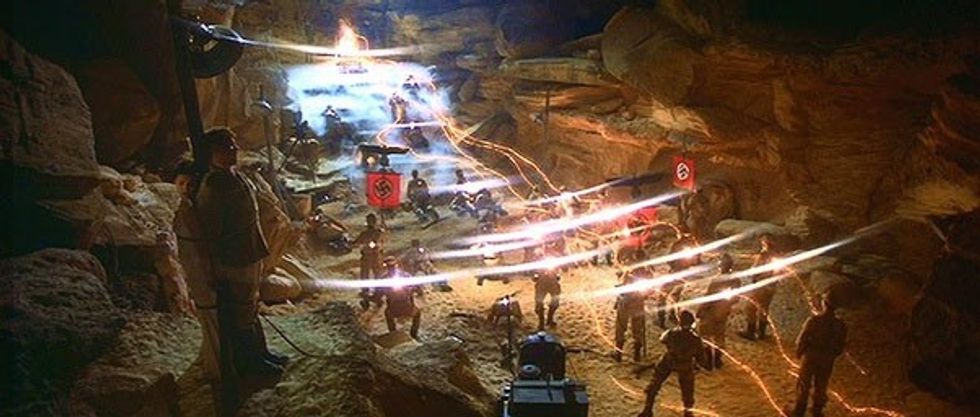What Computer Should Editors Buy Next (According to a Pro Computer Builder)?
Hear from a Senior Technician at one of the top custom computer builders in America about what to look for in a post-production powerhouse.

Since Apple announced the upcoming release of the new Mac Pro, the post-production community has been in a flurry of excitement and hesitancy, wondering what to make of it.
The new Mac Pro is a beautifully designed attempt to remind creative professionals that we are still in the back of Apple's mind. The computer boasts impressive internal specs and claims to be an incredibly powerful workhorse, but starting at nearly $6,000, is it really worth the price point?
What do we really need, and what are the other options out there that can give us what we need? We sat down with Matt Bach from Puget Systems, a top-tier Seattle-based computer company that specializes in high-performance custom built machines, to ask about his take on the new Mac Pro, what hardware really matters for editors and colorists, and the future-proofing of our systems.
NFS: Looking at new Mac Pro and the custom-built PCs that Puget Systems makes, what are some major differences and/or pros and cons to each system in terms of hardware, price point, and software support?
Matt Bach: Apple does a very good job in terms of hardware engineering, but one of their biggest strengths is also a weakness: limited choice. Only being able to pick from a handful of Xeon CPUs, requiring the use of expensive ECC memory, and having no option for NVIDIA GPUs is a huge limiting factor when trying to get the best system for your workflow. Every piece of software out there uses hardware differently, and limiting your ability to tailor the system for the software you use every day means that you will typically end up paying significantly more for a Mac Pro than you would for a PC of equal performance and quality.
You can also flip this on its head, however, and talk about how the weakness of PC is choice. Even if you just look at the latest generation of hardware, there are hundreds of CPUs to choose from, dozens of brands of motherboards, RAM, and video cards (not to mention all the different models each of those brands has), and they are most certainly not created equally. Plus, there are thousands of companies that you can purchase a system from, ranging from small Mom and Pop stores to giants like HP and Dell. And just like the hardware inside the PC, each company is going to give you a different experience in terms of service and quality.
The good news is that once you are inside your application of choice (be it Premiere Pro, DaVinci Resolve, etc.), the behavior and functionality is almost always exactly the same no matter what operating system you are using.
This is really where Puget Systems shines. We are dedicated to being experts not only on the hardware side but on the software and workflow side as well. This allows us to look at the almost limitless combinations of PC hardware, and narrow it down to the one that will get you a workstation that is perfectly tailored for both the software you use and your workflow within that software. In the end, our goal is to enable you to do your job, whether it is to create videos, motion graphics, or any other form of art. We want your workstation to be the last thing on your mind so that you can focus on the things you are passionate about rather than mucking around with the various hardware options.
From a service and support standpoint, there is also so much more that we can do than Apple or any of the giant PC manufacturers. Since we focus so heavily on content creation, we can devote more time on internal training for that market than any other company I know of. For example, if you are having a problem with Premiere Pro, you can call our support department (who are in the same building as our consulting and production teams in Washington state) and they not only know what Premiere Pro is without you needing to be escalated to some other team, they very likely have already dealt with your exact issue in the past and can give you a solution to get you up and running as quickly as possible. Everyone in our service team gets training on the most common content creation software packages, the headaches and problems that often come up, and even just the basics like industry-specific jargon so that you can speak with us using the language and terminology you use every day.
NFS: How do you account for the software differences between custom built PCs and the macOS ecosystem? How many of your clients are/were macOS users?
Bach: This is extremely common and the number of customers who are former (or current) Mac users has been steadily growing for us. Some of this may be because people were unhappy with how long it took for the Mac Pro to be updated, but I believe much of it simply comes down to the fact that we spend considerable effort to understand the transition from MacOS to Windows so that we can guide our customers that are in that exact situation.
The good news is that once you are inside your application of choice (be it Premiere Pro, DaVinci Resolve, etc.), the behavior and functionality is almost always exactly the same no matter what operating system you are using. Often, it is the little things that users have the hardest time adjusting to. One of the most common is how the keyboard hotkeys are slightly different since the ctrl/alt/win keys are in a different order than the ctrl/opt/cmd keys. Or how Windows doesn’t have a spacebar preview function built-in.
To help customers make the transition as smoothly as possible, we have a number of Mac to PC FAQs in place (such as the one on our Premiere Pro Page) to help make people aware of the most common issues they may run into, and the solution to those issues. Plus, our service staff is always available to help with any specific needs or concerns you may have.
NFS: Have you found that Linux can bridge some of the gaps as more Post software is moving to support it?
Bach: Not as much as you may think. Linux is a terrific operating system, but it is definitely not user-friendly. This is improving, but unless you have an IT staff with a lot of Linux background, you are more likely to run into issues with Linux than with Windows. There is also the fact that Adobe products do not work on Linux. Unless you are exclusively a colorist and work solely in Resolve, you are probably going to want to have access to Photoshop, if nothing else, and that simply isn’t an option on Linux.
NFS: As a picture editor, I've noticed more and more cameras are supporting and DPs are shooting ProRes RAW (or even ProRes 4444 XQ). What are some reasons that productions using ProRes workflows or editing on Final Cut Pro would stop buying Apple machines? How would it affect or change that current workflow?
Bach: ProRes is a great choice and is one of the best codecs currently available in terms of quality and ease of editing, but it really isn’t an Apple exclusive anymore. Premiere Pro, DaVinci Resolve, Avid, and pretty much any other editor out there is going to be able to work with ProRes and some (including Premiere Pro) can now export to ProRes as well. Even 30fps 4K ProRes 4444 XQ you can natively edit with at full resolution in Premiere Pro with a properly configured PC. And that PC will be well below even the entry cost of the upcoming Mac Pro.
Final Cut is a separate topic, however, since that is (and likely always will be) an Apple exclusive.
NFS: What hardware features in the new Mac Pro and iMac Pro are missing for editors and colorists? Can some of the new external modules, like BlackMagic's eGPU Pro, provide scalability and match custom built machines?
Bach: eGPUs are really nice to have, but they are not a replacement for an internally connected GPU. Not only do you have to pay for the cost of the enclosure itself which greatly increases the price, but as fast as Thunderbolt 3 is, the connection speed is still only a quarter of what you get with a GPU directly connected to the motherboard. That doesn’t make it a quarter the performance in the real world, but there is definitely a loss there. Plus, who wants to have a bunch of eGPUs on their desk, each with their own power cord, fans, etc.? In my mind, the draw of eGPUs comes from what they can provide to users who work on laptops that otherwise have no access to a powerful GPU.
As far as the hardware features missing in the new Mac Pro and iMac Pro, I believe it again comes down to lack of choice. Do you want to have 10TB of storage? You need to go external. Don’t need a Xeon or ECC RAM (which 99% of editors don’t)? Too bad, you have to pay for it anyway. Want to use an NVIDIA GPU so you have access to CUDA? Sorry, that isn’t supported by MacOS, even if you use an eGPU.
However, a big caution we like to give is that you cannot just throw money at the problem.
NFS: Color grading is GPU heavy. What are your thoughts on what a colorist needs? How well are those needs met by solutions already on or about to be on the market, like the new Mac Pro?
Bach: This is a really tough question since the hardware in the new Mac Pro is not released yet (even the PC equivalents) and we know nothing about pricing other than the entry model cost. I do think the new Mac Pro is going to be better for colorists using DaVinci Resolve than any other Apple product to date, but just like anything Apple you are going to be paying a huge premium for it.
Based on the DaVinci Resolve testing we’ve done on the AMD Radeon VII, which is currently AMD’s most powerful GPU on the market, I would expect that a fully maxed out Mac Pro with four Vega II video cards should be able to keep up with a high-end PC with four GPUs. However, you are probably going to end up paying anywhere from twice to four times (depending on how the pricing works out) as much for that Mac Pro. With that large of a difference in cost, you could simply get multiple machines or start looking into PCIe expansion (basically eGPU’s big brother) that would be able to get you even more processing power.
NFS: What would you say are some of the hardware differences between what is best suited for a picture editor vs. a colorist?
Bach: I’m going to limit this just to the main workstation itself since you could easily expand this topic to include peripherals like displays and control panels.
On the workstation side, it is often less about the role of the user than the software they are using. An editor could use Premiere Pro, Avid, or DaVinci Resolve, and each of those applications is going to want a slightly different hardware configuration. If the editor is using Resolve, the system would end up being almost identical to what a colorist would want to have, like multiple, powerful GPUs with enough CPU power to keep up with the video cards. That is what runs Resolve the best, whether you spend most of your time in the Color or Edit tabs.
On the other hand, if an editor is using Premiere Pro or Avid, multiple GPUs isn’t going to do much for you so you should spend your budget on a more powerful CPU. However, a big caution we like to give is that you cannot just throw money at the problem. Yes, Premiere Pro is more about CPU power than GPU power right now, but getting an expensive dual Xeon configuration is not the right way to go. There is always a limit to how effective any piece of software is at utilizing the hardware in your system and things like dual Xeon are almost always going to be slower in editing applications even though they are significantly more expensive than a single CPU setup.
Future proofing is always difficult since not only is hardware constantly changing and evolving, but the software is as well.
NFS: How can editors future-proof their systems, as one of the most frustrating parts about investing in new hardware is that it will quickly become outdated?
Bach: Future proofing is always difficult since not only is hardware constantly changing and evolving, but the software is as well. 6 years ago, the way to future proof would be to make sure that you could upgrade the CPU. But with the recent focus on GPU acceleration by most developers, it is entirely possible that having an upgradeable GPU is going to be more important than an upgradeable CPU.
However, there are a number of guidelines that I believe should be followed if future-proofing is a concern:
- Get more GPU power than you currently need. GPU acceleration is a big focus for most developers right now, and even if the software you use doesn’t particularly benefit from a higher-end GPU at the moment, it likely will in the future. You can also make sure that multiple GPUs will be an option. We regularly pre-wire for multiple GPUs in our systems by request so that customers can easily add another GPU in the future.
- Make sure you can add more RAM. With the rise of 4K, and now 8K, media, you are likely going to need more system memory in the future. Getting more RAM than you need can be expensive with little short-term benefit, but as long as the system has the physical slots to add more RAM later it is a relatively easy upgrade to perform.
- Get more and faster storage (or the ability to add it). Again, due to the increase in camera and project resolution, you should make sure that the system at least supports multiple NVME or PCI-E storage drives. You may not need them for most of your source media since a standard SSD should be fast enough for anything except RAW 8K footage, but these drives are terrific for things like cache and scratch drives.
- Make sure the power supply and system cooling are up to any upgrades you may want to do. Typically, these two things are configured to match the system as it is originally configured. If you think you may upgrade the CPU/GPU, add more GPUs, or add more storage, you should definitely make sure there is enough head-room so that these relatively minor upgrades don’t snowball into a major system overhaul.
Beyond these, it always pays to keep in mind what you may be doing in the future. If you think you will be moving to centralized storage with 10G networking in a few years, you should make sure the system supports 10G. Doubly so if you are going even higher-end with fiber. Or if VFX work is in your future with something like OctaneRender, you probably want to make sure that you will have the ability to add plenty of GPUs to the system.
We are unfortunately long past the days where upgrades are linear and clear-cut. It takes an understanding of how your software uses the various hardware in your system (including the CPU, GPU, RAM, and storage), as well as anticipation of how developers will change things in the future and an awareness of how your workflow will evolve in order to adequate future-proof your workstation.
You can check out more on Puget Systems here.
